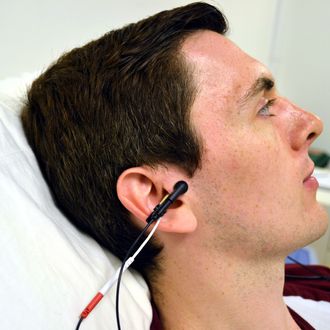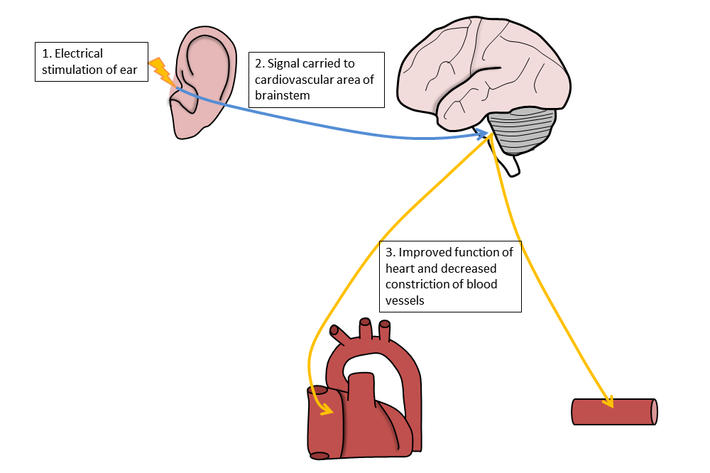
We usually associate improved cardiac health with things like exercising more or eating better, but a recent paper in Brain Stimulation suggests a new way to keep hearts ticking safely: a noninvasive device that clips onto a patient’s ear. The researchers, a team from the University of Leeds, tested the effects of a TENS (transcutaneous electrical nerve stimulation) machine, which elicits a tickling sensation, on healthy patients.
TENS machines are commonly used to relieve labor pains, so this was a novel use of them. The press release explains the device’s effects:
Lead researcher Dr Jennifer Clancy, of the University of Leeds’ School of Biomedical Sciences, said: “The first positive effect we observed was increased variability in subjects’ heartbeats. A healthy heart does not beat like a metronome. It is continually interacting with its environment — getting a little bit faster or a bit slower depending on the demands on it. An unhealthy heart is more like a machine constantly banging out the same beat. We found that when you stimulate this nerve you get about a 20% increase in heart rate variability.”
The second positive effect was in suppressing the sympathetic nervous system, which drives heart activity using adrenaline.
Dr Clancy said: “We measured the nerve activity directly and found that it reduced by about 50% when we stimulated the ear. This is important because if you have heart disease or heart failure, you tend to have increased sympathetic activity. This drives your heart to work hard, constricts your arteries and causes damage. A lot of treatments for heart failure try to stop that sympathetic activity — beta-blockers, for instance, block the action of the hormones that implement these signals. Using the TENS, we saw a reduction of the nervous activity itself.”
This potential treatment is a form of vagus nerve stimulation (VNS), which is most commonly used for treatment-resistant epilepsy and depression. Generally, VNS has required surgical implantation of both an electrode and a generator to provide power, and the paper’s researchers write that this could be one reason VNS, despite showing promise for a range of other conditions, hasn’t been more widely tested. The TENS-plus-VNS combination could allow for a much easier way to deliver these sorts of treatments.
A diagram released by the researchers shows how it all works:

Science, you goofy.




